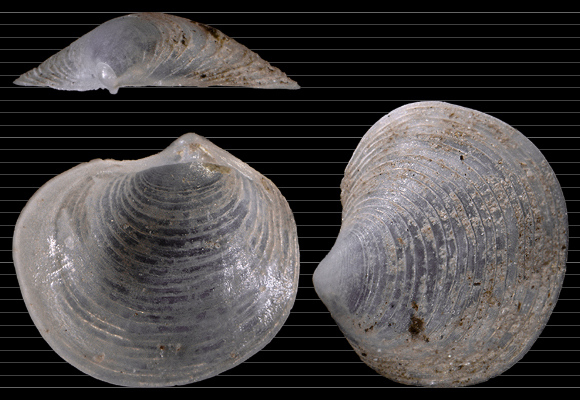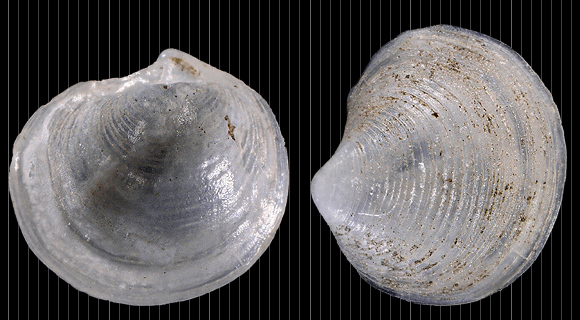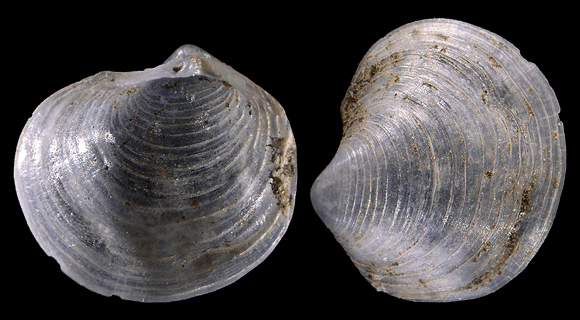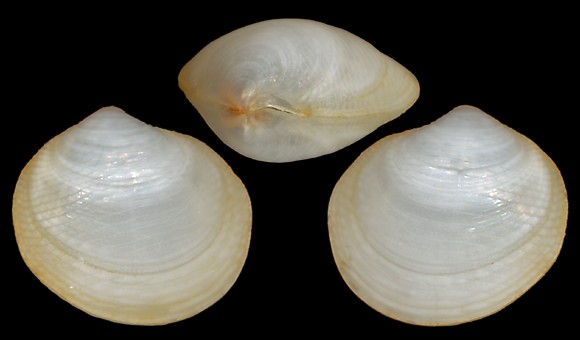
Original taxon: Tellina divaricata.
Synonyms: arcuata, commutata.
8m deep, on sand, Évvia island, E. Greece. 4,5mm.
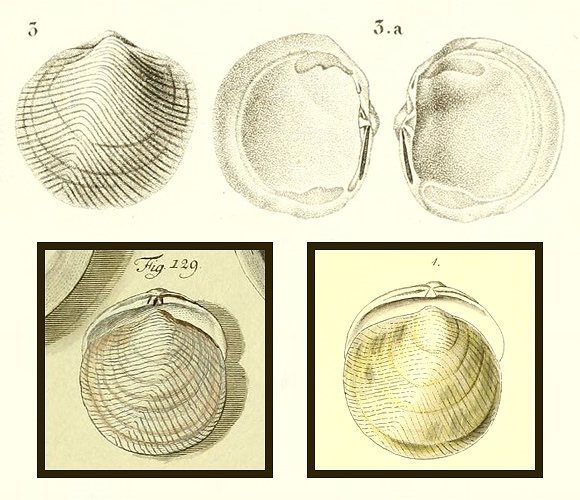
1: L. Pfeiffer: “Die Familie der Venusmuscheln”, Systematisches Conchylien-Cabinet Bd.11:Abt1, 1869.
3-3a: H. M. de Blainville: Manuel de malacologie et de conchyliologie tome II-plates, 1827.
129: Martini & al.: Neues Syst. Conch.-Cabinet Bd.6, 1782.
Strigilla divaricata – « Shell half an inch in diameter, white, thin, brittle, orbicular with a slight flexuosity on the hinder side, rather convex, with regular but not very close striae which form rather oblique curved lines and turn off at both the sides nearly in right angles ; beaks central, very prominent […]. This latter shell has very fine and uniform obliquely arched striae, like the lines at the ends of the fingers, with a slight angular curvature on one side only… » – M. D. Turton: Conchylia insularum Britannicarum, London 1822, p.119 & 121, via BHL.
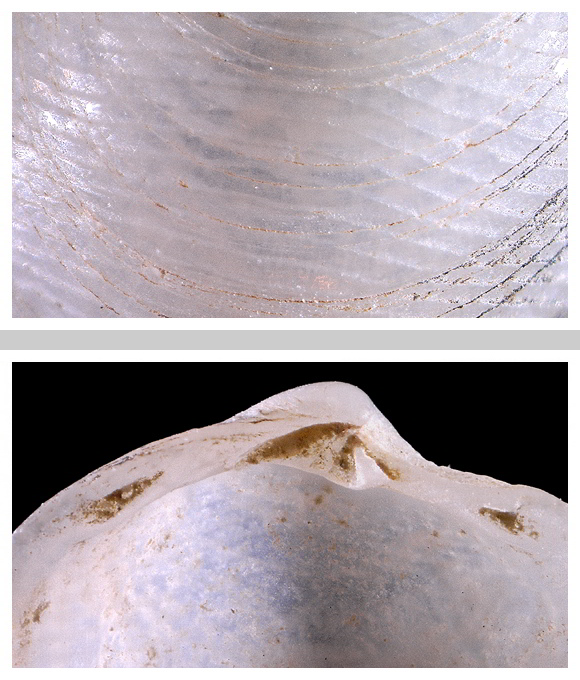
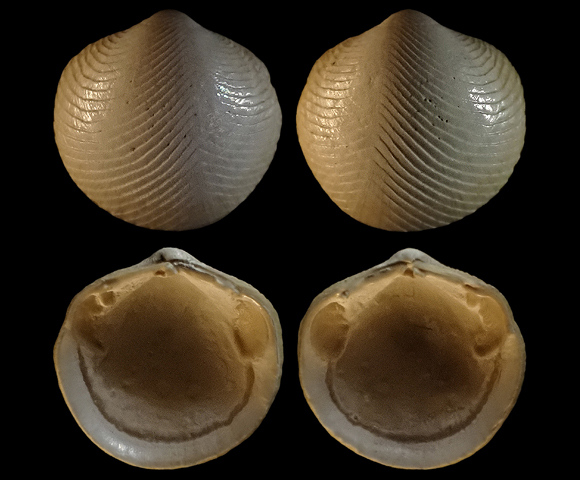
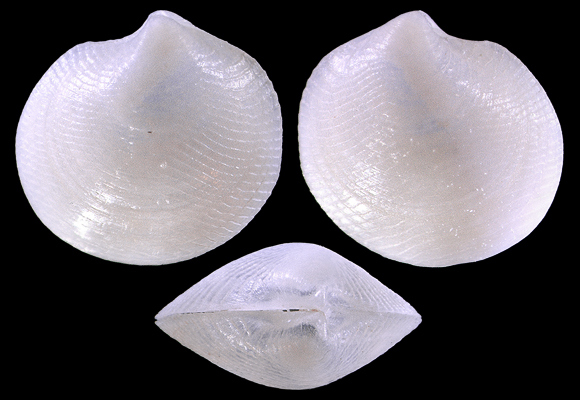
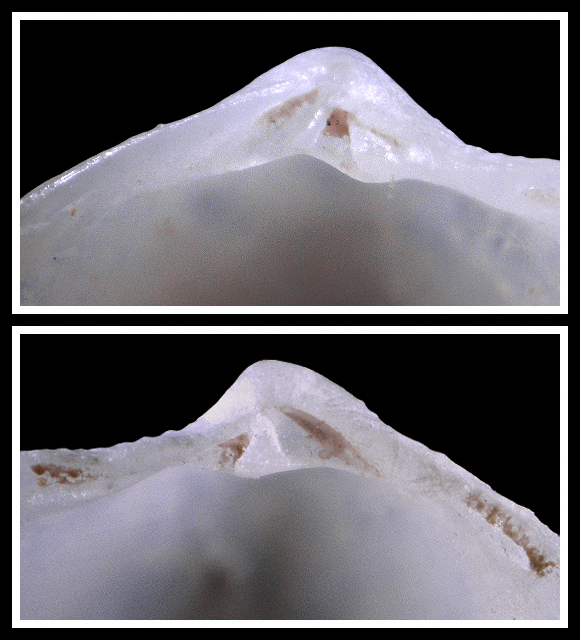
Turton: « hinge with a single cloven tooth in one valve, closing between two plain ones in the other ; the lateral teeth remote and small […] the lateral teeth are obscure, consisting of a tubercle near the beaks in each valve, and in one valve a remote one at the end of the groove which receives the ligament. »
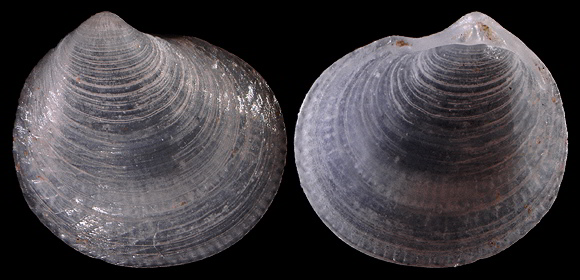
Georgioúpoli bay, east of Chaniá, NW. Crete. 1,9mm.
